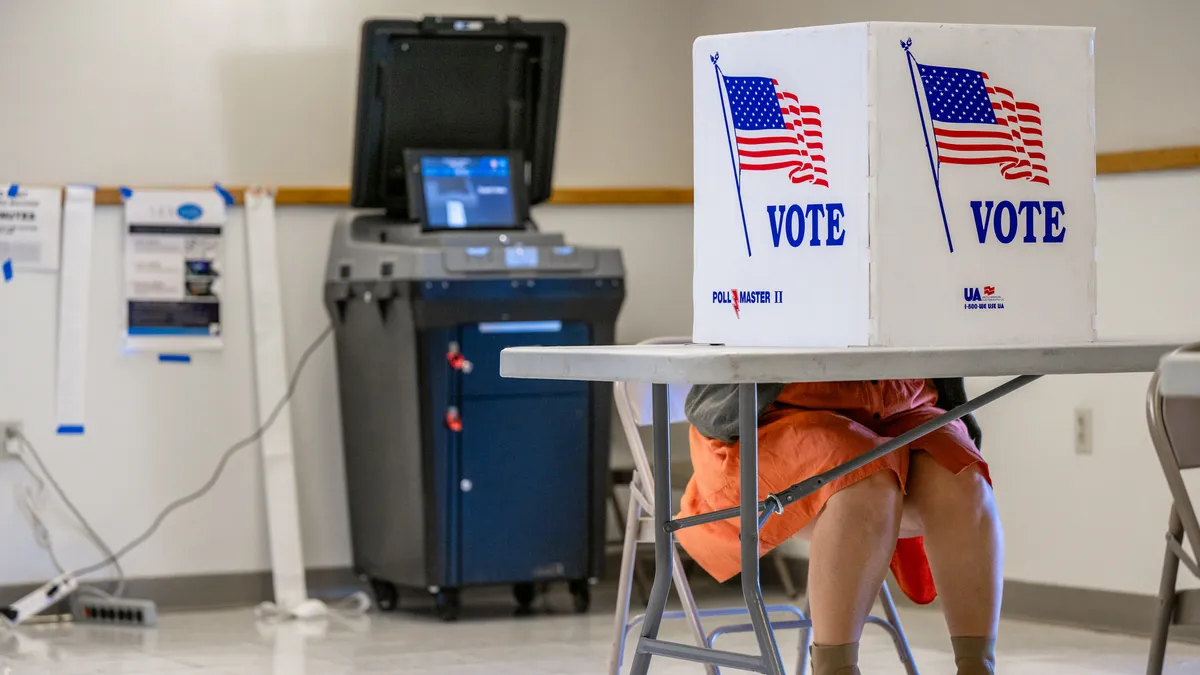The following is a guest piece by Scott Parker, CEO of digital agency Social Factor. Opinions are the author’s own.
The political divide in the U.S. is well-documented. The Pew Research Center says a growing number of Republicans and Democrats view people in the opposite party as “more closed-minded, dishonest, immoral, and unintelligent than other Americans.” In 2020, we saw how this divide played out on social media, as political echo chambers led to significant ideological segregation in news exposure during the election.
Now, with the 2024 U.S. presidential rematch looming, brands must be extra mindful of all areas of their social media operation. In navigating the pre-election chaos, brands should place an emphasis on four primary areas, all of which are essential for weathering the impending social storm: strategy, technology, engagement and intelligence. What follows are specific guidelines to help brands avoid the 2024 election minefield.
Strategy
For brands, strategy is always the best place to start. Because without it, the hills may come alive with the sound of a social media crisis.
Start now
Don’t wait until the height of the election cycle to develop a plan for your brand. Bring stakeholders together now to create clear, comprehensive guidelines and processes.
Identify risks and opportunities
Scroll back to 2020 on your brand’s timeline to see what parts of your social media strategy worked (and what didn’t). Then, research current trends to anticipate challenges and opportunities related to the election cycle.
Dust off your crisis communication plan
You never think about it until you really need it. But when it’s time to “break the glass” on your crisis communication plan, make sure the instructions are current, comprehensive and clear. Ensure that your brand’s plan accounts for responding to negative comments, misinformation and other potential situations that could arise. And don’t forget to update your contact list to keep your internal team informed of any escalation.
Refresh channel guidelines
A lot has changed on social media in four years. Twitter is now X. Facebook is now Meta. TikTok users continue to rise (even as a potential ban looms). And your online communities have changed, too. Take time to understand who follows your brand on each platform and tailor your content with the understanding that some platforms may be more susceptible to misinformation and negativity than others.
Be aware of the company’s political leanings
If your company or executive leaders are politically active, it’s important that your social media strategy accounts for their public political stance, campaign contributions and PAC donations. Transparency is key to maintaining trust and avoiding backlash.
Technology
Have you audited your systems and software lately? If the answer is no, then it’s time to connect with your technology leaders to ensure your brand has the necessary systems in place for the 2024 election cycle. Much like voting machines must stay up to date to ensure election integrity, so do your social media operations.
Refine social listening tools
If you aren’t regularly updating your social listening queries, now’s the time to adjust to capture evolving issues, memes and online conversations. By taking a proactive monitoring approach, your brand can avoid potential controversies and anticipate opportunities to capitalize on key moments.
Optimize moderation workflows
Similarly, if you haven’t taken a peek under the hood to ensure your moderation tools and workflows are operating efficiently, connect with your team to refine workflows to manage the increased online activity during the election cycle. While leveraging automation can help create scale, remember, there’s no replacing the human touch for complex and nuanced situations that will likely arise during this time.
Strengthen security
Small things can make a huge difference. Audit who has access to your brand channels and ensure multifactor authentication and other security measures are up-to-date and working properly. Check that security updates are in place for software, systems, websites and devices. Every brand needs to prepare for potential hacking attempts, especially if you maintain a large online following.
Engagement
Don’t let everything you’ve just read scare you away. You wouldn’t climb Mount Everest without arriving at base camp prepared with everything you need to make it to the top and back. With preparation in the rear-view mirror, let’s talk about tracing your route to the top.
Take a strategic and proactive approach
Your strategy should define how you’ll engage in election-related conversations online, whether that’s proactive, reactive or even entirely removed from the narrative. If your brand chooses to engage in election-related conversation, it’s important to be proactive in cultivating positive conversations around your brand, helping to keep negativity from spiraling out of control, along with any subsequent consequences.
Stay true to your brand
It’s easy to get caught up in the moment. That’s why people engaging and responding on behalf of your brand must understand your identity, values and strategy. With a consistent approach to engagement across the team, your brand can build community and become a unified voice. This includes clear definitions of the brand’s political positions on relevant issues.
Offer something valuable
Don’t wait for a golden opportunity to strike during the election cycle and ignore your overall content strategy. Continue to share content that engages and entertains your audience.
Use humor (carefully)
Being truly funny on social media is a fast track to engagement. But being culturally insensitive and offensive is a one-way ticket to an unfollow or block. If humor isn’t already a part of your brand’s DNA, tread lightly. You want people to engage because of what you say, not how you say it.
Be responsive (to both good and bad)
It’s likely you won’t be manning your keyboard when misinformation strikes or a negative comment goes viral. That’s why it’s vital to have a clear escalation process to address these issues. Be sure your team is prepared to act quickly and transparently when a crisis occurs. In the same way, be quick to engage with brand love, praise and positivity from your online community.
Enforce community guidelines
Just like “no shoes, no shirt, no service” is a standard rule of engagement for restaurants, online spaces need guardrails. You can help ensure a safe environment by having clear community guidelines and consistently enforce them across all brand platforms.
Protect your community
At the same time, be mindful of how moderating election-related conversations can potentially be perceived as censorship. Review your community guidelines for areas that need adjustment. That way, you can allow for an open exchange of ideas while still ensuring your community is a welcoming place where people can share their thoughts without hateful and harassing discourse.
Know when to disengage
Avoid getting into debates or arguments that can damage your brand's image. Sometimes, it’s best to decline an opportunity to engage in a conversation you know is needlessly inflammatory. Don’t forget, the hide button is your friend when leveraged appropriately.
Intelligence
The special sauce that will take things to the next level is an analytical approach to the insights you've gained from everything you’ve done up to this point. Much like a gourmet cheeseburger dripping with deliciousness, your social media operation will be something you look forward to biting into, provided you’re consistent with analysis and optimizations.
Stay informed
Track key issues, public sentiment and potential flashpoints for engagement to stay informed during the election season. Monitor competitor activity and emerging trends to remain adaptable, strategic and opportunistic.
Think outside the box
By embracing creative solutions, you can mitigate the impact of a crisis and capitalize on opportunities as they arise.
Monitor community performance
Beyond standard social performance, such as likes, comments and shares, be sure to measure which content drives community engagement. Are most of your comments spam or single, non-engaged comments (e.g., cool, ok, agree)? Determine if your users are thoughtfully engaging with your content and with others.
Make data-informed adjustments
Analyze your data and performance to optimize your social media strategy throughout the election cycle.
Preparation, flexibility and transparency are the keys to navigating the social media landscape during an election cycle. Be proactive, address potential issues and authentically engage your audience. With planning and an actionable strategy, your brand can maintain a positive image and thrive during another sure-to-be-tumultuous election season.






















